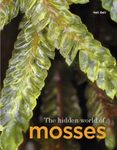Field / Identification Guide Identification Key
By: Vincent Hugonnot(Author), Florine Pépin(Author), Jaoua Celle(Author)
328 pages, colour photos, colour & b/w illustrations, colour distribution maps
![Mousses & Hépatiques de France: Manuel d'Identification des Espèces Communes [Mosses and Liverworts of France: Handbook to Common Species Identification] Mousses & Hépatiques de France: Manuel d'Identification des Espèces Communes [Mosses and Liverworts of France: Handbook to Common Species Identification]]()
Click to have a closer look
About this book
Customer reviews
Related titles
About this book
Language: French
Bryophytes are found everywhere in France, from the plains to the highest peaks of the Alps and the Pyrenees. They play a major role in many ecosystems, especially peatlands and forests, where they represent a very large part of the biomass. Bryophytes are also excellent bioindicators of the quality of natural habitats. They make it possible to refine the characterization of many types of vegetation dominated by flowering plants.
Accessible to all, this field guide allows teachers, students or naturalists to take their first steps in the field of bryology. The advantages of this book:
- updated data on the biology and ecology of mosses and liverworts
- keys allowing the identification of about 200 species easily observed in France
- 400 species of bryophytes are mentioned, of which about 200 (the most common) are the subject of detailed entries
- the 12 protected species in France are also presented in detail and their distribution is indicated on maps
- an illustrated glossary to become familiar with the specific vocabulary for the study of bryophytes.
Summary in French:
Les bryophytes se rencontrent partout en France, des plaines aux plus hauts sommets des Alpes et des Pyrénées. Elles jouent un grand rôle dans de nombreux écosystèmes, notamment les tourbières et les forêts, où elles représentent une part très importante de la biomasse. Les bryophytes sont également d’excellentes bioindicatrices de la qualité des habitats naturels. Elles permettent d’affiner la caractérisation de nombreux types de végétations dominées par les plantes à fleurs.
Accessible à tous, ce livre de terrain permet aux enseignants, aux étudiants ou aux simples amoureux de la nature de faire leurs premiers pas dans le domaine de la bryologie.
Les plus de cet ouvrage:
- des données actualisées sur la biologie et l’écologie des mousses et des hépatiques
- des clés permettant l’identification d’environ 200 espèces faciles à observer en France
- 400 espèces de bryophytes sont mentionnées dont environ 200 (les plus courantes) font l’objet de fiches détaillées
- les 12 espèces protégées en France sont aussi présentées en détail et leur répartition indiquée sur des cartes
- un glossaire illustré permettant de se familiariser avec le vocabulaire spécifique à l’étude des bryophytes.
Customer Reviews
Field / Identification Guide Identification Key
By: Vincent Hugonnot(Author), Florine Pépin(Author), Jaoua Celle(Author)
328 pages, colour photos, colour & b/w illustrations, colour distribution maps






![Mousses & Hépatiques de France: Manuel d'Identification des Espèces Communes [Mosses and Liverworts of France: Handbook to Common Species Identification] Mousses & Hépatiques de France: Manuel d'Identification des Espèces Communes [Mosses and Liverworts of France: Handbook to Common Species Identification]](http://mediacdn.nhbs.com/jackets/jackets_resizer_xlarge/25/258548.jpg?height=620)
![Mousses & Hépatiques de France: Manuel d'Identification des Espèces Communes [Mosses and Liverworts of France: Handbook to Common Species Identification]](http://mediacdn.nhbs.com/jackets/jackets_resizer/25/258548.jpg)
![Mousses & Hépatiques de France: Manuel d'Identification des Espèces Communes [Mosses and Liverworts of France: Handbook to Common Species Identification]](http://mediacdn.nhbs.com/jackets/jackets_resizer/25/258548_1.jpg)
![Mousses & Hépatiques de France: Manuel d'Identification des Espèces Communes [Mosses and Liverworts of France: Handbook to Common Species Identification]](http://mediacdn.nhbs.com/jackets/jackets_resizer/25/258548_2.jpg)
![Mousses & Hépatiques de France: Manuel d'Identification des Espèces Communes [Mosses and Liverworts of France: Handbook to Common Species Identification]](http://mediacdn.nhbs.com/jackets/jackets_resizer/25/258548_3.jpg)
![Mousses & Hépatiques de France: Manuel d'Identification des Espèces Communes [Mosses and Liverworts of France: Handbook to Common Species Identification]](http://mediacdn.nhbs.com/jackets/jackets_resizer/25/258548_4.jpg)
![Mousses & Hépatiques de France: Manuel d'Identification des Espèces Communes [Mosses and Liverworts of France: Handbook to Common Species Identification]](http://mediacdn.nhbs.com/jackets/jackets_resizer/25/258548_5.jpg)

















![Les Bryophytes de France, Tome 1: Anthocérotes et Hépatiques [The Bryophytes of France, Volume 1: Hornworts and Liverworts]](http://mediacdn.nhbs.com/jackets/jackets_resizer_medium/25/252427.jpg?height=150&width=99)
![Carex de France: Manuel d'Identification de Terrain [Sedges of France: Manual to Field Identification]](http://mediacdn.nhbs.com/jackets/jackets_resizer_medium/25/257097.jpg?height=150&width=101)
![Oiseaux de Nouvelle-Calédonie: Grande Terre, Îles Loyauté et Archipels Éloignés [Birds of New Caledonia: Grande Terre, Loyalty Islands and Remote Archipelagos]](http://mediacdn.nhbs.com/jackets/jackets_resizer_medium/26/263909.jpg?height=150&width=103)
![Les Fougères et Plantes Alliées d'Europe [Ferns and Allied Plants of Europe]](http://mediacdn.nhbs.com/jackets/jackets_resizer_medium/25/254775.jpg?height=150&width=101)
![Les Poissons d'Eau Douce de France [Freshwater Fish of France]](http://mediacdn.nhbs.com/jackets/jackets_resizer_medium/25/252425.jpg?height=150&width=117)
![Poissons d'Eau Douce de Guyane: Plongée dans les Eaux de l'Amazonie Française [Freshwater Fish of French Guiana: A Dive in the Waters of the French Amazon]](http://mediacdn.nhbs.com/jackets/jackets_resizer_medium/22/227715.jpg?height=150&width=149)
![Les Papillons de Jour du Maroc: Un Guide d'Identification et de Bioindication [Butterflies of Morocco: Identification and Bioindication Guide]](http://mediacdn.nhbs.com/jackets/jackets_resizer_medium/17/172979.jpg?height=150&width=101)
![Cahier d'Identification des Orthoptères de France, Belgique, Luxembourg & Suisse [Identification Guide to the Orthoptera of France, Belgium, Luxembourg and Switzerland]](http://mediacdn.nhbs.com/jackets/jackets_resizer_medium/26/265812.jpg?height=150&width=103)
![À la Recherche des Orchidées de Madagascar: Sur les Traces d'Henri Perrier de la Bâthie [In Search of the Orchids of Madagascar: On the Trail of Henri Perrier de la Bâthie]](http://mediacdn.nhbs.com/jackets/jackets_resizer_medium/24/241076.jpg?height=150&width=104)
![Atlas des Papillons de Jour d'Aquitaine [Atlas of Butterflies of Aquitaine]](http://mediacdn.nhbs.com/jackets/jackets_resizer_medium/25/258580.jpg?height=150&width=103)
![Observer les Oiseaux en France: Plus de 300 Sites Ornitho [Watching Birds in France: More than 300 Birdwatching Sites]](http://mediacdn.nhbs.com/jackets/jackets_resizer_medium/24/247046.jpg?height=150&width=94)